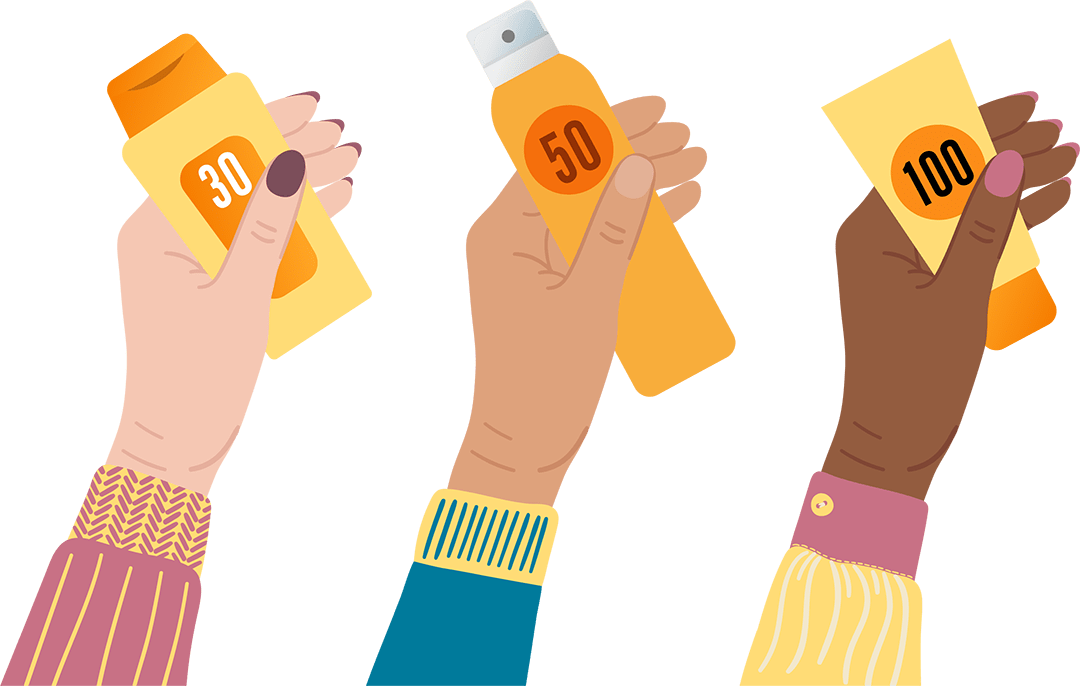Common Sun Myths That May Increase Your Risk
When it comes to nonmelanoma skin cancer, taking the proper sun precautions can help prevent future damage to your skin. However, a recent survey conducted by Onepoll on behalf of DermTech* found that while 75% of respondents thought they were mindful of their sun exposure, their behaviors suggested otherwise.
Did you know that UV rays can cause changes in your skin’s DNA?
Approximately 90% of nonmelanoma skin cancer is associated with exposure to UV radiation from the sun or artificial sources, like tanning beds.1,2 One in five Americans will develop skin cancer by the age of 70, but when found early, it will likely be easier to treat.3,4
People’s behaviors that may affect their skin cancer risk:

- Both millennials and Gen Xers have used baby oil or tanning oil in the sun (43%)
- Almost half of women (49%) have used baby oil or tanning oil vs. 34% of men
- Almost 30% of Gen Xers never wear sunscreen
- Only 25% are very likely to get a skin cancer screening if they don’t see any notable changes in their skin

While 75% of Millennials and Gen Xers are mindful of their sun exposure, only 19% use sunscreen year round

- Many also admit to going outside on a sunny day without sunscreen (78%), a hat or head covering (72%), or UV protective glasses (70%)
- Approximately 1/4 thought SPF lower than 30 was adequate, which does not align with the American Academy of Dermatology recommendations5

Exposed: Unsafe Sun Habits Lead to Sun Regrets

- 82% couldn’t identify which image was basal cell carcinoma
- 79% couldn’t identify precancer actinic keratosis or squamous cell carcinoma

Sun Safety Knowledge Increasing
The good news is that when it comes to sun safety knowledge, respondents scored high marks.

- 76% knew that those with darker skin can get skin cancer.
- 75% were aware that UV rays can be damaging on cloudy days.
- 78% understood that there are other causes of skin cancer aside from sun exposure.


*The random double-opt-in survey of 2,000 millennial (ages 26-41) and Gen X (ages 42-57) respondents was commissioned by DermTech and conducted between Oct. 31 and Nov. 11, 2022.
- Pleasance E.D., Cheetham R.K., Stephens P.J. A comprehensive catalogue of somatic mutations from a human cancer genome. Nature. Jan 14, 2010;463(7278):191–196.
- Young Kim, Yu-Ying He. Ultraviolet radiation-induced non-melanoma skin cancer: Regulation of DNA damage repair and inflammation. Genes & Diseases. Sept 16, 2014; 1(2); 188-189.
- Stern RS. Prevalence of a history of skin cancer in 2007: results of an incidence-based model. Arch Dermatol. 2010 Mar;146(3):279-82.
- American Cancer Society. Cancer Facts & Figures 2022. Accessed Feb. 23, 2023. https://www.cancer.org/content/dam/cancer-org/research/cancer-facts-and-statistics/annual-cancer-facts-and-figures/2022/2022-cancer-facts-and-figures.pdf
- American Academy of Dermatology. Sunscreen FAQs. Accessed Feb. 3, 2023. https://www.aad.org/media/stats-sunscreen
